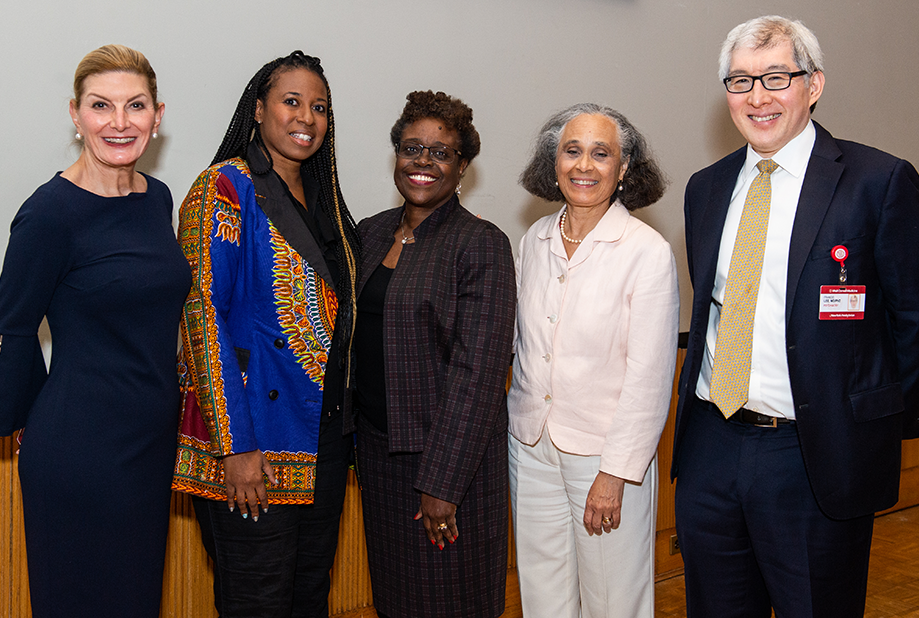
After actively reinforcing or accepting policies that excluded Black physicians from its ranks until the civil rights era—the American Medical Association (AMA) is now working to embed health equity across the organization and in 2020 declared racism a public health threat, said Dr. Aletha Maybank, the AMA’s inaugural chief health equity officer and senior vice president.
“Of course, health is political and social. As physicians, if we don’t have context to that, we’re blind—not doing the best we can to care for people or even understand them in the context of their lives,” said Dr. Maybank, whose lecture focused on recent AMA initiatives to advance equity and social justice.

Dr. Aletha Maybank
Dr. Maybank delivered the annual Elizabeth A. Wilson-Anstey, EdD Lecture on April 25 as part of the institution’s fifth annual Diversity Week. In remarks to introduce Dr. Maybank, Dr. Linnie Golightly, associate dean of diversity at Weill Cornell Medicine, praised Dr. Wilson-Anstey—who was among audience members—as someone students and faculty members “all knew was the heart and soul of diversity.” “She has supported so many of us here,” Dr. Golightly said, “and is seen as the friend, the counselor and the wise one.”
Dr. Maybank, who joined the AMA in 2019 to launch its Center for Health Equity, confessed that she was initially hesitant since the institution “historically didn’t always sit on the right side of history.” But she saw a great opportunity to engage with its 270,000+ members when the AMA created her position, which is supported by a staff of 50. “Often, institutions do not provide the support and resources to do this work in a transformative way, but the AMA has stuck to its commitment,” she noted.
Chief among the AMA’s Center for Health Equity efforts is the creation of a strategic plan to help members “see and feel where we need to go,” she said. The plan encompasses five key approaches, which all include disrupting “malignant and dominant narratives that undermine optimal health for all.”
Prominent examples include updated AMA guidelines for reporting race and ethnicity in medical journal articles and the recent addition of more diverse illustrations in medical reference books. Dr. Maybank showed the audience a detailed illustration of a Black pregnant woman and fetus that demonstrates the importance of this update.
“Before seeing this, I had never seen a fetus that was not white in a picture,” she said. “It’s kind of profound when you step back. It’s shocking. Part of this work is how we challenge ourselves to challenge the narratives that don’t support us.”
Good intentions aren’t enough to promote health equity, but the AMA is making up for lost time, she said.
“Diversity refers to all the identities we carry and the belief that we should all be here,” she said. “Everyone should have access to becoming a physician and feel they have a place at their institution. But if we’re not focused on a power analysis beyond diversity and inclusion, we will not reach equity.”

